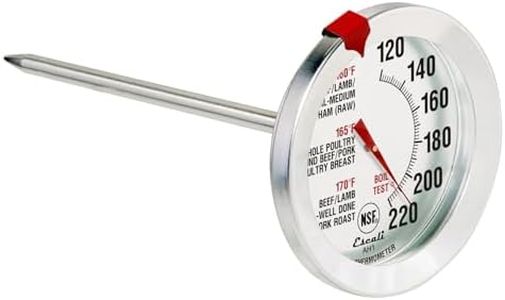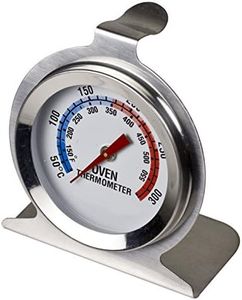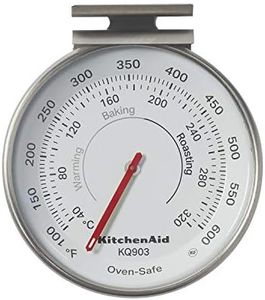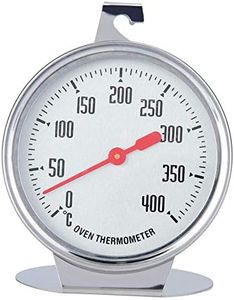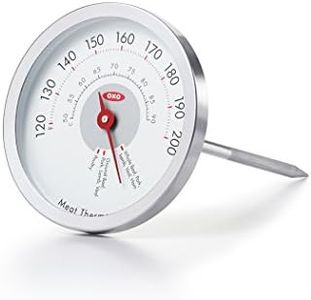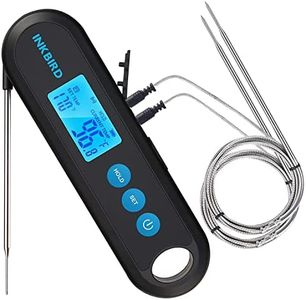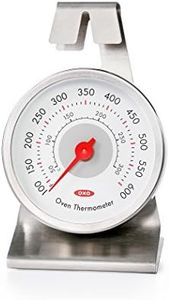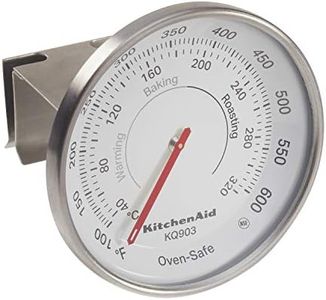We Use CookiesWe use cookies to enhance the security, performance,
functionality and for analytical and promotional activities. By continuing to browse this site you
are agreeing to our privacy policy
10 Best Oven Thermometers
From leading brands and best sellers available on the web.Buying Guide for the Best Oven Thermometers
Choosing the right oven thermometer is all about making your cooking and baking more reliable. Ovens often have built-in thermostats that aren't always accurate, so an oven thermometer helps you know the real temperature inside. To find one that fits your needs, it’s important to look at a few key features that affect accuracy, readability, placement, and durability. Your cooking habits and kitchen setup should guide your choice.Temperature RangeThe temperature range tells you the lowest and highest temperatures the thermometer can measure. This is crucial, because some recipes require very low temperatures (for things like slow-cooking or drying) while others need high heat (like for pizza or roasting). Basic models usually cover 100°F to 500°F, while broader ranges can go from as low as 50°F up to 600°F. Think about what you typically cook or bake: if you mostly make standard meals or baked goods, a mid-range thermometer will work. If you experiment with low-temperature techniques or very high-heat recipes, a thermometer with a wider range is a better fit.
Display Type and ReadabilityThe display can be either a dial or a digital readout. Readability is important because heat and steam in ovens can make it difficult to get a quick reading. Dial displays are common and usually have large numbers and marks, while digital types give an exact number. If you want quick and precise readings, or have trouble seeing small text, look for bold, clear displays or digital thermometers. Choose what feels comfortable to glance at through the oven window or open door.
Mounting StyleOven thermometers can be hung from a rack, stand independently, or have magnets to stick to oven walls. The mounting style affects how flexible the placement is in your oven and how easily you can see the temperature while cooking. Hanging types are easy to move but may swing, standing ones are stable but need flat space, while magnetic models are versatile but require metal surfaces. Consider your oven’s shape, available shelf space, and how you like to organize your baking trays to decide which mounting style would be most convenient for you.
Accuracy and CalibrationAccuracy tells you how close the thermometer's reading is to the actual oven temperature. A thermometer that can be calibrated, or adjusted back to true if it drifts over time, helps keep your temperature readings reliable. Some thermometers are factory-calibrated and can’t be adjusted, while others have a small screw or dial for calibration. If you're serious about baking or have noticed your oven is unreliable, an adjustable thermometer is a smart choice.
Material and DurabilitySince oven thermometers must withstand high temperatures regularly, build quality matters. Stainless steel is the most common material thanks to its heat resistance and safety, but avoid flimsy plastics or painted finishes that could peel. If you use your oven a lot, pick a thermometer with sturdy all-metal construction to ensure it lasts longer and remains safe to use.
